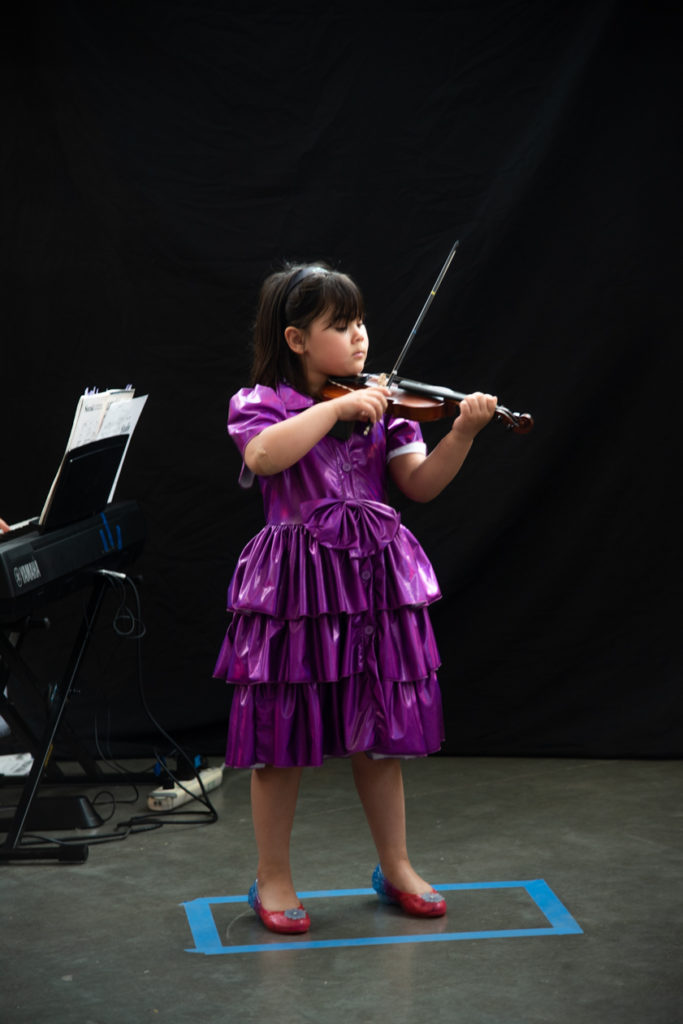
Many of my private violin students participate in their school music program. In Ithaca, all students from the third grade on can start to learn an instrument in public school.
The popularity of the instrument programs is high because of an incredible music outreach program. The local professional orchestra will do presentations for every school in the county, demonstrating the unique beauty and play-ability of each instrument. In fact, many of my students choose to learn a second instrument in school other than the violin.
I want to capture a few frameworks that help this situation be as musically productive as possible.
- Should we do the school music program?
- For violin I say, emphatically, yes. I think it’s helpful to reinforce school music and bolster the program with students who play really well. It also gives my students opportunities to play in different ensembles, work with a different teacher, and usually exercise a lot of reading skills. By the time they are in third grade my students are often well set-up and reading, so I don’t feel there is a risk to having two teachers.
- If the child wants to play a different instrument I make it clear that our expectations for violin practice–listening, group attendance, and lesson attendance– will not change. If the child has slack time in their schedule that they want to use for clarinet practice, for example, then they are welcome to do so. If they are already so involved in other activities that would require taking something away in order to add something in (otherwise the music practice time will be split). It is wild to me that children are making this choice in third grade, but it is an essential lesson to learn. Our resources, especially time, are finite.
- Reach out to the school music teacher.
- It feels really good to me to send a note to the school music teacher to introduce myself, especially at the middle school level. I send something short and sweet about being a certain student’s private teacher, and to reach out anytime if they need support with their school music.
- Attend concerts.
- This semester I attended two concerts that happened during the day at local elementary schools. I was blown away by how touched families were that I was there to support. 45 minutes of my time on a Wednesday morning is worth it if that cements a commitment to our relationship forever. I want them to know that I care about all of their efforts, even outside of our studio, and especially in music!
- Unfortunately band and orchestra concerts at the middle school and high school level are often scheduled in the evening while I am teaching, but I will try to get the ones that I can!
- Working on school music in the lesson.
- I will check up on school ensemble music and solo pieces (for NYSSMA solo and ensemble) very occasionally. Perhaps once at the beginning of the year, once in the winter, and once before the end of the school year. If I know my student is about to have a performance I will listen and offer teaching points on their playing. I think there is a disproportionate benefit to the student feeling extremely prepared for an audition or concert. That being said, I don’t want it to completely take over our lessons, so I put a limit from day one. I’ll listen to this in our lesson today, but it is your responsibility to maintain and practice this music at home. I’ll often put a note to practice in the ‘reading’ category on their practice chart. We will also put time boundaries like 10 minutes a day so it doesn’t take overwhelm practice. I find being explicit is much more helpful than assuming they will regularly practice the music or weigh it with the same importance (not too little, not too much) as I do.
- If my student is not in a violin program I do not hear their music, but I will ask about it and try to draw connections to what we are doing in the lesson.
School music programs are a big life experience for students so I don’t want to ignore them, I want to help my students get the most out of them. I hope these frameworks are helpful!

